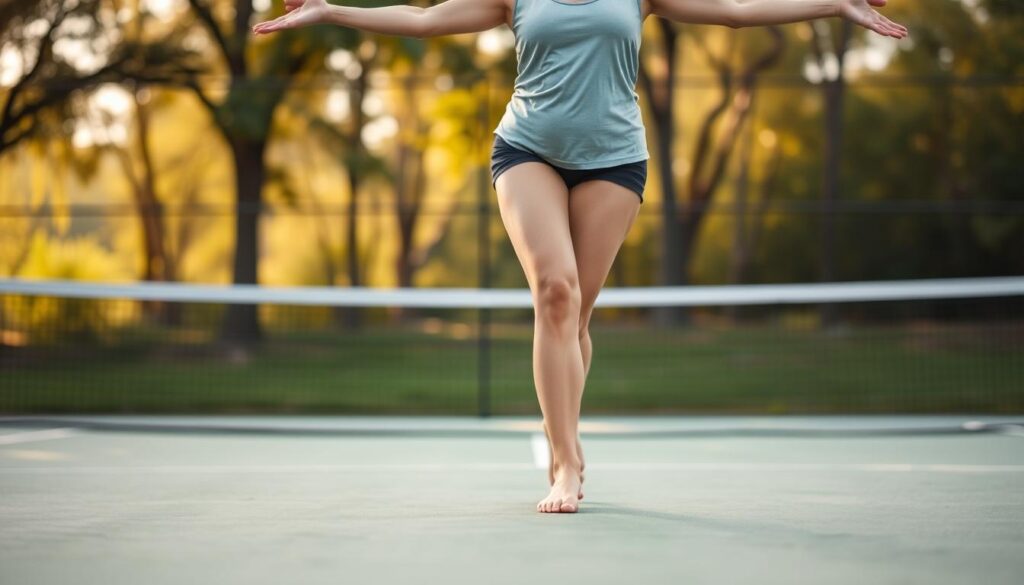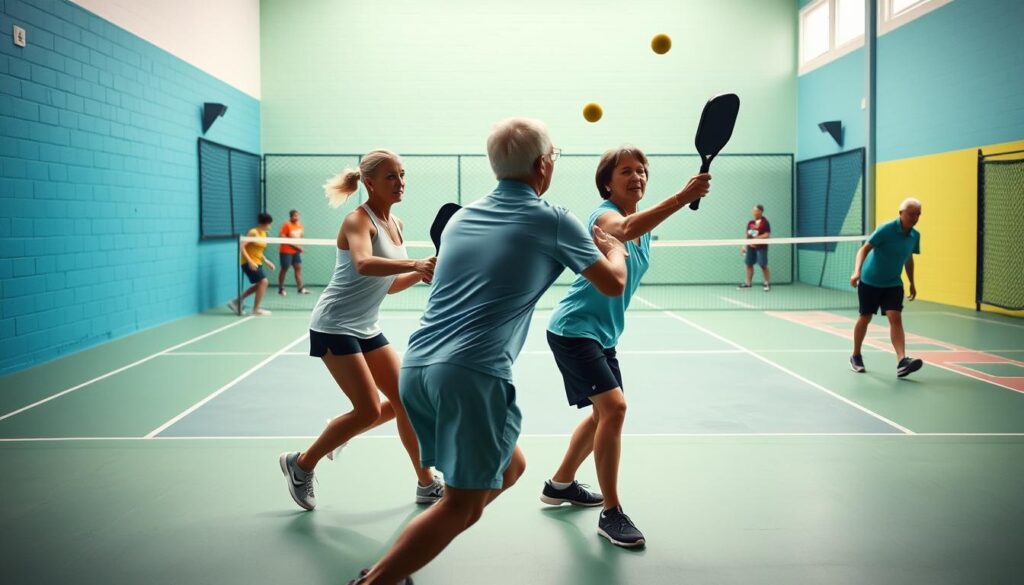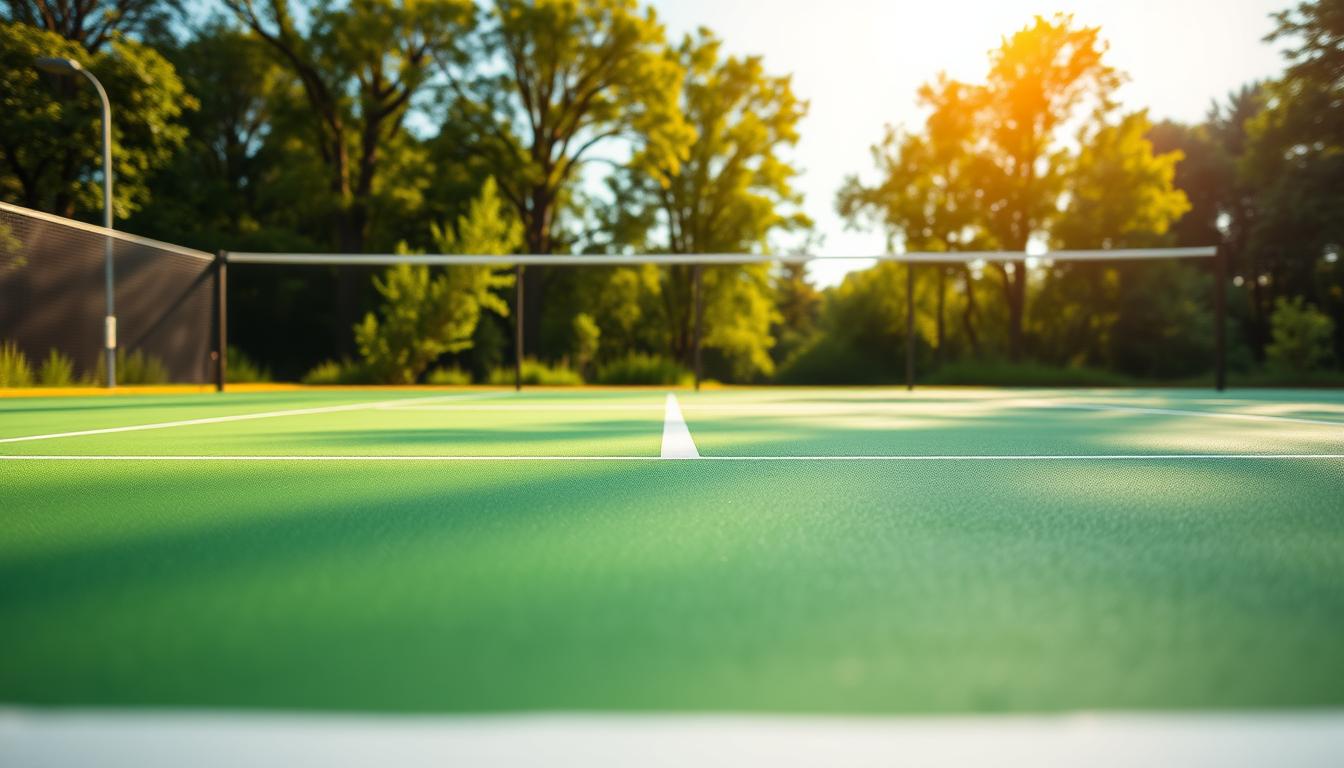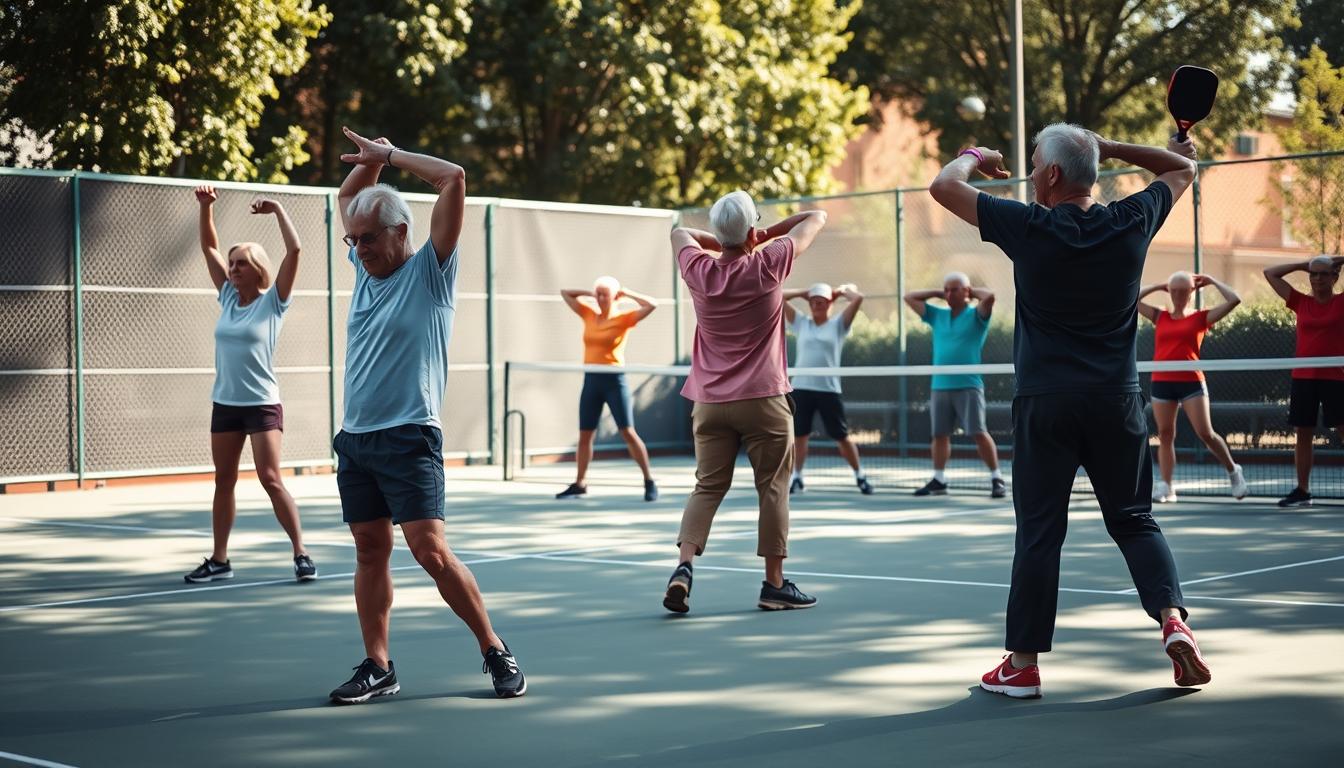Curious how you can sharpen court skills while protecting joints and staying true to a plant-based routine?
This guide offers a practical plan that blends technique, pacing, and nutrition so adults can build confidence and stay fit without high strain.
Warm-ups of five to ten minutes with dynamic moves ease stiffness and cut injury risk. The focus is on accuracy, control, and habits that teach the mind and body to move smarter rather than harder.
Expect court work paired with simple at-home strength and balance sessions, plus nutrition tips that support muscle and recovery for plant-focused eaters. Each routine respects age-related needs and promotes steady performance gains.
Follow this week-to-week framework to measure progress, reduce overuse, and keep your body healthy for the long term.
Why Low-Impact Pickleball Fits Players Over 50 and How to Warm Up Safely
A compact warm-up and sensible pacing let players build confidence and avoid overuse injuries.
The smaller court and underhand serving style reduce running distance and joint loading. That makes play gentler on knees and hips and helps the body handle frequent sessions.

Benefits for joints, balance, and mind
Short, regular sessions boost balance and reaction time more than long marathons. Improved confidence follows steady progress.
Consistent prep also primes connective tissue, lowering strain on hips and the lower back during quick starts and lateral moves.
Five-to-ten-minute dynamic warm-up
Do about 5–10 minutes of dynamic exercise before stepping on court.
- 30–45 seconds arm circles to loosen shoulders.
- 30–45 seconds torso twists for spinal mobility.
- 30–45 seconds leg swings and side steps to activate hips and legs.
- Finish with light shadow swings to prime timing and shoulder mobility.
Safety first
Wear supportive court shoes with non-marking soles to protect your feet and provide lateral stability.
Pace your time and repetitions to avoid form breakdown that can stress the back and hips. Use lightweight paddles with cushioned grips to cut vibration in wrists and elbows.
Hydrate before, during, and after sessions and plan at least one rest day per week so recovery matches age-related needs. A simple, repeatable routine helps you stay active and enjoy the game for years.
Pickleball vegan over 50 low impact drills: court-ready skills that protect your body
Simple, joint-friendly court practices help players sharpen control without adding strain.

The Wall Rally
Stand 5–7 feet from a flat wall. Alternate forehand and backhand with smooth, compact swings.
Count balls kept in play and aim to raise your record while keeping the front shoulder relaxed.
Dinking Practice at the kitchen line
Practice soft shots with a partner close to the net. Focus on arc, height, and placement.
Keep the paddle up, knees soft, and weight over the mid-feet to control pace.
Serve and Return Routine
Serve 10–20 balls deep to push opponents back. Then work high, controlled returns that buy time to reach the kitchen.
Rotate roles so players strengthen both serves and returns.
- Drop Shot Challenge: From near the baseline, think “lift, don’t hit” to land safely in the kitchen.
- Footwork Shuffle: Set two markers and shuffle side-to-side with short steps; add shadow swings on cue.
- Volley Rally: Meet the ball at chest level with compact blocks and soft catches to build reflexes.
- Target Practice: Use cones or towels for aim and consistency across forehand and backhand.
| Drill | Distance / Position | Focus | Suggested Time |
|---|---|---|---|
| Wall Rally | 5–7 feet from wall | Consistency, controlled swings | 2–4 minutes / 2 sets |
| Dinking Practice | Kitchen line | Arc, height, placement | 3 minutes / 2–3 sets |
| Serve & Return | Baseline / mid-court returns | Deep serves, high returns | 10–20 balls per role |
| Footwork & Targets | Side markers / cross-court zones | Short steps, accuracy | 2–4 minutes per pattern |
Keep repetitions manageable so form stays crisp. Start at a slow level, add movement, then mix patterns to improve timing and control.
Use short blocks of time and rest between sets. This routine protects joints while sharpening the instincts that win points.
Strength and balance at home that transfer to the court
A focused mix of leg, core, and balance moves boosts on-court stability with minimal equipment.
Lower-body building
Do chair squats to strengthen legs and hips. Keep knees tracking over the feet and the back neutral.
Add standing calf raises by a chair to improve ankle stiffness and push-off power.
Practice ball pickup squats during warm-ups to reinforce safe bending mechanics and add extra muscle work.
Upper-body and core
Wall push-ups train the chest, shoulders, and triceps with gentle loading. Step the feet farther out to increase difficulty.
Chair dips build triceps strength for compact volleys. Use seated torso twists to teach rotation through the torso while protecting the back.
Balance and lateral control
Standing side leg raises target hip abductors for better stance width and side-to-side control.
Standing toe taps and seated knee extensions improve single-leg control and support quick first steps.
- Sets: 2–3 circuits of 10–15 repetitions each, resting as needed.
- Keep form crisp; stop if pain appears and consult a clinician for any back or joint concerns.
Vegan nutrition for strength, recovery, and performance over 50
Practical plant-based meals can support strength gains when total protein is sufficient. Newer research shows that, with matched protein, plant patterns can match animal-based plans for muscle building in supervised training.
Plant protein works
News from controlled trials led by Nicholas Burd and colleagues found similar muscle synthesis when total protein was equal. Other researchers note gram-for-gram differences narrow if intake is planned and varied.
How much and when
Aim for roughly 1.2–1.6 g/kg per day on training days. Spread that protein across meals and snacks, and front-load some at breakfast to make totals easier to hit across the years.
Smart plant options
Whether ’re choosing tofu, lentils, peas, or quinoa, combine foods (rice + beans, quinoa + legumes) to cover essential amino acids and boost leucine. Examples: tofu scramble with toast, a quinoa-lentil bowl, a pea-protein smoothie, or rice-and-beans with veggies.
| Meal | Why it works | Protein cue |
|---|---|---|
| Tofu scramble + toast | Soy = leucine-rich | Front-load breakfast |
| Quinoa + lentils | Complete amino acids | Balance carbs & protein |
| Pea protein smoothie | Easy, dense protein | Snack to meet totals |
Remember: training drives gains and protein supports recovery, strength, and long-term health. Keep meals practical so you can stay active and sustain progress.
Conclusion
Keep the plan simple and consistent. Build sessions around a 10-minute warm-up, wall blocks and kitchen-line shots, serve and return work, plus short volleys and drop sequences. Aim for tight sets so shots and timing stay sharp.
Do brief exercise add-ons at home to strengthen the leg and torso muscles. Use bodyweight moves and a sturdy chair to protect the back and chest while you progress.
Limit minutes per drill, rest between repetitions, and track sets so you can safely add speed or movement. Watch contact height and keep the paddle in front to lower stress on the upper back and elbows.
Wear supportive shoes, hydrate, and schedule rest days. Whether ’re starting or returning, focus on progress over perfection and keep a short log so each week starts smarter and you stay fit and sharp in mind for years.




